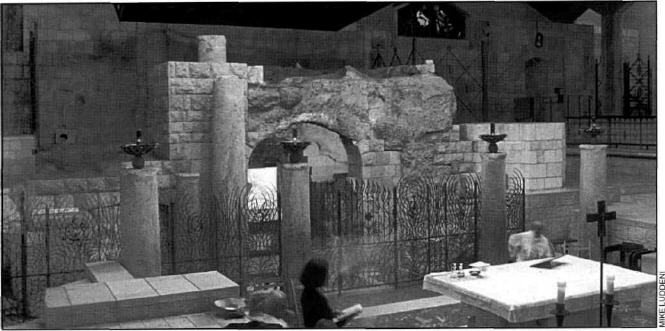Socioeconomic Factors in the Success of Early Christianity -- By: Stephen Caesar
Journal: Bible and Spade (Second Run)
Volume: BSPADE 14:1 (Winter 2001)
Article: Socioeconomic Factors in the Success of Early Christianity
Author: Stephen Caesar
BSpade 14:1 (Winter 2001) p. 7
Socioeconomic Factors in the Success of Early Christianity
[Christianity generally spread throughout Palestine and the Mediterranean world among the middle and lower classes. Author Stephen Caesar points to new studies which reveal everyday life of the common man and help us understand the Gospel’s impact during the days of Jesus and the Apostles.]
Recent archaeological investigations in the lands of the New Testament have revealed a previously unexplored facet about infant Christianity: the socioeconomic realities of the first-century Roman world that contributed to the successful propagation of the Christian message. Research by Neil Asher Silberman, contributing editor of Archaeology magazine, and Richard Horsley, University of Massachusetts at Boston, have made a significant contribution to our understanding of the social backdrop against which the Gospels and Acts of the Apostles were set. Along the way, they also underscored the accuracy with which the New Testament depicts social situations of the first-century Mediterranean world.
In the mid-1990’s, Silberman and Horsley conducted a two-year survey of the lands in which the events of the New Testament took place—Judea, Galilee, Syria, Jordan, Asia Minor, Greece, Italy—in order to uncover the “broader social context behind the spread of Christianity” (Silberman 1996:30). Their research indicated that the first-century Roman world was marked by widespread economic dislocation, burdensome taxation, centralized regulation of trade and commerce, and a “widespread confiscation and redistribution of land to Roman veterans and officials...” (ibid. 35). Small, independent farmers were unwillingly displaced by large estates owned by the super-rich, causing societal dislocation on a massive scale. These changes, Silberman and Horsley assert, created sufficient misery and despair to pave the way for the message of Christianity.

First century AD Nazareth was located in a high valley of Lower Galilee’s Nazareth mountains, overlooking the Valley of Jezreel (Armageddon). Somewhat like a bowl, the village sat in the bottom (where the spring was located) with mountains surrounding on all sides. Not mentioned in the Old Testament, archaeological evidence indicates the site’s first permanent settlement appeared in the first century BC. Only a tiny agricultural village inhabited soley by Jews, estimates suggest two or three clans in 35 homes spread over about 6 acres. Structures sat on, and were even carved into, bedrock, as can be seen on the grounds of the Church of the Annunciation today. Dry-farming of olives, grapes, figs, almonds, wheat and barley made the village representative of the wo...
Click here to subscribe
